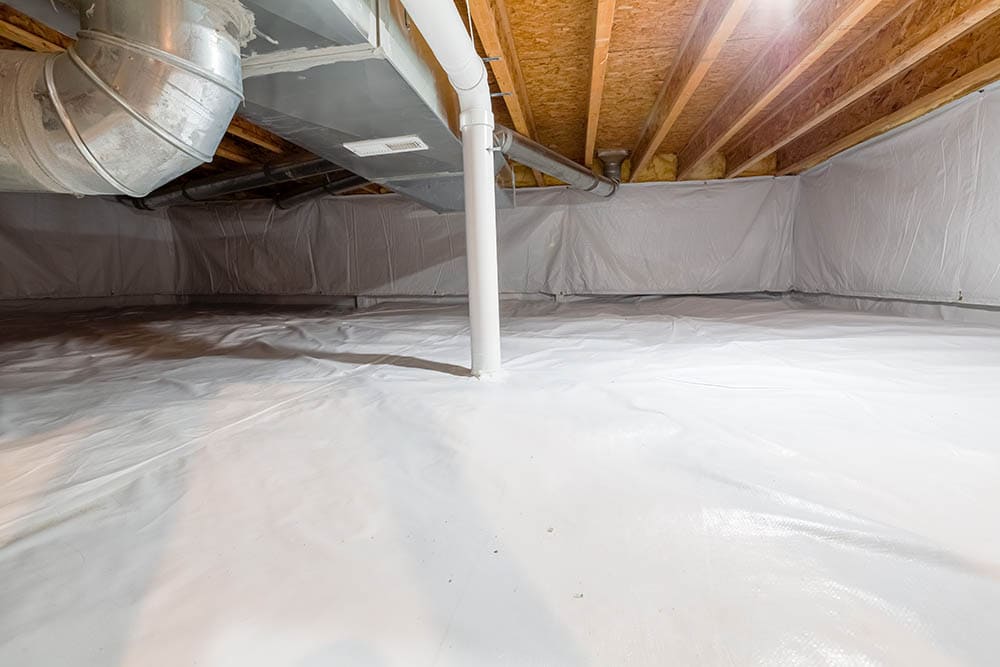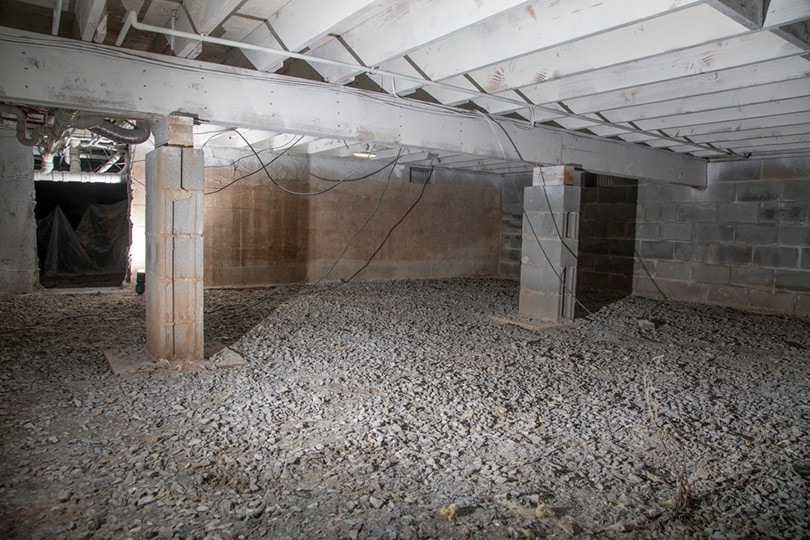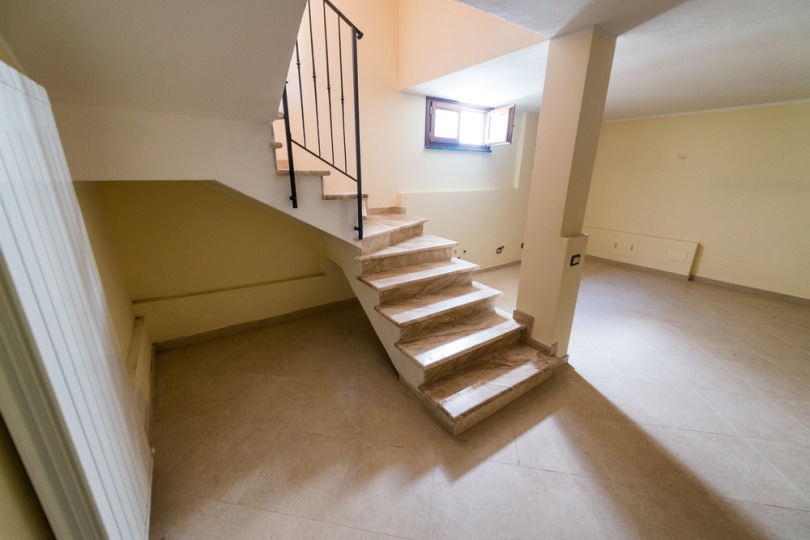Is a Crawl Space Safe During a Tornado? Preparation, Signs & FAQ
-
Pete Ortiz
- Last updated:

Tornadoes are one of the most violent and destructive forces of nature. If there’s a tornado, you need to find a safe place to shelter. There are many safe options within your home, but no matter where you choose, ensure that it will shield you well.
Most people may not prefer the crawl space because it is mostly dark, damp, and far from your kitchen and bathroom. However, it is a safe space, and if you do not have any other place, you can actually shelter here.
There are various opinions about what a homeowner should do when a tornado warning is issued. In this article, we will discuss how safe a crawl space is, the safest places to be if there’s a tornado, and what states have the most tornadoes.
So, let’s get educated on how to keep safe during this natural phenomenon!
 What Is a Crawl Space?
What Is a Crawl Space?
A crawl space is an area of a home built below the ground level. It’s usually a dirt or concrete floor lower than the rest of your home. Crawl spaces are found in older homes with wood floors, but you can also find them in newer homes with concrete floors.
It’s called a crawl space because there’s limited height. So, you can only crawl but not stand. Initially, these spaces are meant for extra storage. They also protect the house from flooding and moisture damage. They keep the house cool in summer, so you can save on energy bills.

Is the Crawl Space Safe During a Tornado?
Yes, the crawl space is safe during a tornado. Usually, these spaces are underground, so they’re safer from flying debris. If you stay inside the house during a tornado, you’re at risk of flying glass and other sharp objects coming from broken windows or doors.
If you’re in your attic, there’s no guarantee it won’t suffer damage from high winds. Even if there’s no visible damage to the house after a tornado passes, that doesn’t mean you’ll be safe inside an attic.
How to Prepare Your Crawl Space in Case of a Tornado
If you live in a tornado alley, it’s helpful to prepare your crawl space in case of one. A tornado alley is an area that experiences frequent tornadoes. A crawl space is easy to protect. Here are several tips for preparing your crawl space for a tornado:
- Install a Sump Pump: The sump pump will keep water out of your basement during heavy rains or flooding. It pumps it out into an exterior drain system or a sewer line. Ensure you install it in your crawl space or basement.
- Seal the Crawl Space from Critters and Bugs: Your crawl space is an open invitation for critters to inhabit your home. Seal any holes or gaps that may allow bugs in. This way, you’ll be safe from other harmful animals such as black widow spiders and snakes. You can use concrete to seal the space.
- Make Sure You’re Not Under Heavy Objects: Tornadoes are dangerous and destructive. Avoid sheltering under heavy objects such as furniture. They can hurt or crush you if they fall on you during the tornado. So, if you have heavy objects stored in the crawl space, remove them to create ample space in preparation for a tornado.
- Ensure the Crawl Space Is Clean: A dirty crawl space can cause severe health problems. It can also lead to mold growth if moisture enters through cracks in the foundation. Also, rodents live in dark corners and use them as toilet areas. Any rodent feces left behind can cause severe health issues if you inhale it. Keep your crawl space clean so that no dust or feces builds up in these areas over time!
When the tornado happens, you will have a clean space to seek refuge.
Other Safe Places to Shelter During a Tornado
When there’s a tornado, the safest place to be is the lowest level of your house. A tornado doesn’t have enough strength and speed to tear a home from the ground. Usually, it destroys the uppermost sections of the house.
Besides the crawl space, there are other safer places you can stay in if you live in an area prone to tornadoes (tornado alley).
Let’s take a look at them:
1. The Basement

The basement is the safest place during a tornado. Being that they are below ground level, they’re protected from flying debris. They’re also reinforced with concrete or cinder block walls and floors. Even if the tornado turns your house into Swiss cheese, you’ll survive the collapse.
The basement’s concrete walls can withstand strong winds without any damage. Besides, many basements have drains that allow water from outside the house to flow away from the building rather than collecting inside the basement.
A basement also protects you from fallen power lines, an aftermath of tornadoes.
2. The Closet
If you don’t have a basement or other safe place in your home, stay inside a closet. The closet is small and has no windows, making it harder for debris to come through it.
Closets are safe because they look like a box and are structurally strong. Cover yourself with extra clothing to protect yourself from debris, but ensure that the closet is away from the exterior walls.
3. The Bathtub

The bathtub or shower stall is another excellent option because it’s close to plumbing and built-in cabinets that provide support for the structure of your home. Many bathtubs are secured on the floor of the house.
If you use the bathroom as a haven during a tornado, use cushions, blankets, and mattresses to cover yourself from debris.
4. The Stairwell
If you’re beneath the stairwell and a tornado strikes, you have an extra layer of protection. Most contractors will recommend building a safe room beneath the stairwell in case of such disasters.
Warning Signs of a Potential Tornado
A tornado warning means that weather officials have spotted one. Usually, tornadoes are on the ground and are moving toward you.
- A large dark funnel-shaped cloud reaching toward the ground
- Dark and often greenish sky
- Large hail or heavy rain
- A loud continuous roar or rumble (like a train) that doesn’t fade in a few seconds
- Clouds that look like a spinning tube or cone, rather than billowing sheets
- Severe thunderstorms accompanied by thunder and lightning
So, if you see these warning signs, always take them seriously.
- Do not shelter in any room with windows.
- Keep away from doors and outside walls.
- Keep away from corners as they attract rubble and stay in the center of a room.
- Find a small interior room found on the lowest floor.
- Get to the crawl space or basement and use sturdy objects to protect yourself.
- Don’t shelter in a mobile home even if it’s tied.
- Get out as fast as possible if you’re in a mobile home. Lie flat on the low ground far from cars and trees. Protect your head while doing
- Don’t shelter under an overpass.
- Always use the stairs during a tornado.
- Don’t hide in an elevator. You may be trapped inside if power is interrupted.
- If you’re in school, don’t shelter in large rooms like auditoriums or gyms.
- If you’re in a car, stop, park it, and find shelter.
- Never shelter under a bridge.
- Strengthen Weak Spots in Your House: Check for weak spots where wind can enter your house. These include areas around windows, doors, vents, and under roof shingles. Use caulk or sealant to fill gaps around windows and doors.
- Ensure Your Roof Is In Excellent Shape: A damaged roof cannot withstand the pressure of a tornado. It’s more likely that your house will suffer severe damage in case of a tornado. If you have any concerns about the condition of your roof, contact a professional for repairs.
- Trim the Trees Around Your House: Trees are often uprooted during tornadoes. They may cause severe damage to houses when they fall on them. Trimming the trees reduces the weight of branches and leaves on the tree. It also increases airflow through the trees’ canopy.
- Know How to Switch Off Utilities: If you know there’ll be a tornado coming your way, you may need to turn off several utilities ahead of time. These utilities include electricity and gas lines.
The Top 10 States With the Most Tornadoes in the US
The United States is home to some of the most active tornado regions worldwide. Besides, there are several states with more than 100 tornadoes per year.
If you live in one of these states and want to be prepared for a tornado, you should know what you’re up against. Here are the top ten states with the most tornadoes in the US.
| State | Number Of Tornadoes Annually |
| Texas | 135 |
| Kansas | 92 |
| Oklahoma | 75 |
| Alabama | 69 |
| Mississippi | 67 |
| Illinois | 64 |
| Iowa | 62 |
| Missouri | 57 |
| Florida | 53 |
| Nebraska | 52 |
 Conclusion
Conclusion
So, what’s the takeaway from all this? Always have your tornado safety plan in place if you’re located in a tornado alley. Also, if you’re in a tornado safe room, staying there during a tornado is the safest option.
People have survived in everything, from locked closets to bathtubs to cars. But, there’s no guarantee that those options won’t be dangerous during a tornado.
A crawl space is one of the safest areas of your home during a tornado. But it’s crucial to note that if you find yourself in the path of an oncoming tornado, it’s best to seek shelter in your basement. The basement is the safest place to shelter.
See also:
- What is a Crawl Space?
- Is the Crawl Space a Safe Place During a Tornado?
- How to Prepare Your Crawl Space in Case of a Tornado
- Warning Signs of a Potential Tornado
- What You Should Do and Not Do During a Tornado
- Top 10 States with the Most Tornadoes in the US
- How Do You Protect Your Home from Tornadoes?
- YOUTUBE
- CDC
- OSHA
Featured Image Credit: grandbrothers, Shutterstock
Contents

 What Is a Crawl Space?
What Is a Crawl Space?